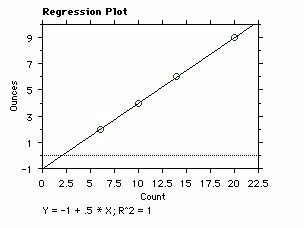Survival: The Last Laugh
Chapter 1 – The Beginning
By Ron Hood, Ed.D. (ABD)
Introduction | 1 – Beginning | 2 – Innovation | 3 – Woods Master | 4 – Exposure
Before we jump into this survival thing, it seems wise to make a few suggestions about rescue. As basic as the following suggestions may seem, they could make the remainder of this book unnecessary. The goal of a trained survivalist is simple:
Always try to avoid placing yourself in a survival situation.
If you think you can’t avoid a survival situation because "Things like that seem to happen to me," then the next best thing would be to ensure that you are rescued with all possible speed.
To Help Assure Your Rescue
1) Tell someone reliable where you are going. Give them a note explaining what route you plan to take and what equipment you are carrying. Before you leave. If you fail to return on time, and your vehicle is still where it is supposed to be (leave the vehicle description, License number, etc. with your friend), the authorities may search for you. Your friend should be given the information needed to report your absence should you fail to return. It should include the phone numbers of the authorities in the area you plan to travel to. With this information the ponderous wheels of bureaucracy might begin to turn a little sooner.
Keep in mind that the authorities have had many unnecessary experiences with foolish and thoughtless packers. It is up to you to survive until they arrive.
2) Tell your friend when to expect you back.
3) Call that person when you return.
4) If you are delayed, try to send word to that person or to the authorities.
5) While on your journey, avoid changing your plans without leaving or sending word about the plan changes.
6) Never go alone (Unless you are prepared to suffer the consequences). Always travel with a companion.
7) Never leave a message on the outside of your automobile if it is parked at the trail road head. Thieves may make use of the information in your note and strip your machine to it’s bones. If you leave a note, leave it inside the vehicle where it can be found by the authorities should they open it.
8) As you travel into the woods, stop and look back frequently. This will familiarize you with the terrain behind you and it will be easier for you to recognize the proper path when you return. This rule applies when you are driving into the woods as well. Forested dirt roads have a way of becoming very familiar after awhile, even if you haven’t seen them before.
Learn to recognize your own tracks, foot and vehicle, as a clue to your previous travels. Learn to use a walking stick to mark your trail. Marks left by a walking stick are very distinctive.
9) Read the rest of this book so you will know what to do if you have an emergency survival situation.
You didn’t follow The Rule
"You didn’t follow The Rule," I thought. I sat there on a rock, staring in morbid fascination as I watched the ants feast on the maggots in his eye sockets. Suddenly the wind shifted in my direction, so I moved to a position farther away and out of the odor.
I was in the mountains of northern Turkey with a small group of Turkish Askari practicing survival and pathfinding skills. It was early spring and the snows had just begun to melt from the canyons in this part of Anatolia. Earlier in the day we had found the remnants of a hunters camp, but no hunter. We found some tattered clothes, a torn leather knapsack, a small case of 8 mm cartridges, a canvas shelter, cooking pots and other gear. When we found the camp, we knew that there had been an accident. When we found the hunter, we learned the rest of the story.
He had walked away from his camp months earlier. His journey had taken him farther from camp than he expected to go. It must have been getting late when he turned back towards his camp. A storm was moving in. He struggled against the weather, using every bit of his energy. Finally, spent, he lay down behind this boulder. The storm took him. The Rule he didn’t follow? Perhaps he didn’t even know the Rule of Three’s.
The Rule of Threes
The Rule of Threes is an uncomplicated way to remember the basic priorities of the human organism, and it is a good starting point for an exploration of survival priorities. The Rule of Three’s looks like this:
A person can live for:
Three minutes without air.
Three hours without shelter.
Three days without water.
Three weeks without food.
Three months without love.
Let’s take a quick look at these priorities and try to understand the them a bit better.
Air
If you can’t breathe, make it so you can. If you can’t make it so, die. End of story.
Shelter
I frequently ask new survival students the question, "If you were lost in a blizzard without your gear what would you do?" The answer I hear most (and which confounds me), sounds something like this. "Build a fire and search for wild food." I can see it now: lost in a howling blizzard, the wind whipping the trees to rubble, frost forming on even the memories of warmth, while our hopeful survivor tunnels through snowdrifts in search of "wild edibles." I wonder if my Turkish friend was thinking of food when he laid down beside that boulder. Without proper shelter, he probably died within three hours.
It seems obvious our survivor must react immediately to the threat posed by the cold blowing storm. Only hours of life remain if the basic shelter needs are not met. Miserable and hungry, cold and scared, but alive if the shelter is properly constructed.
The wind dies, the snow moves from its horizontal path to one more nearly vertical and then stops altogether. The trees shiver as great blobs of storm-driven snow loosen and fall to earth. A patch of blue as the clouds part. Then the first muted mutterings of the forest are heard as signs of life begin to return. The hunched form of the rule-following survivor shoves aside parts of the hastily erected debris-shelter and he sets forth in quest of the next priority. Water.
Water
Like the sailor lost at sea with "water, water everywhere and not a drop to drink," our survivor first gobbles a handful of snow to help fill the rapidly developing vacancy in the hungry center. Oops. That won’t do, either. It takes energy to turn snow into water. Snow may be only about 20% -30% water by volume yet it takes lots of energy to convert the cold snow into warm water. Where is the energy going to come from? No food to eat, and none in the stomach. There will be no power from the fat battery for some time. (It takes many hours to start receiving energy from our fat reserves. We need to stay alive until those reserves are available to us.) Our friend is still powered by the energy stored in the bones and blood. Water will be necessary to assist the energy extraction processes the body uses when converting fat into energy. Lack of water, the third priority, can stop us from utilizing even our own reserves. With dehydration we discover another interesting relationship between water and our chances for survival.
For each five percent our body dehydrates (by weight – i.e. a 100 pound body weight reduced to 95 pounds by dehydration), we lose approximately 25% of our ability to do work. Some authorities claim an even a greater loss of power.
Remember, this is in addition to the loss of ability to do work caused by insufficient energy. The ratio of work energy lost versus the percentage of dehydration remains relatively constant until the victim is literally unable to continue to function. The percentages look something like this.
Percentage of Dehydration and Ability to do Work:
% of dehydration = % of work possible
0% = 100%
5% = 75%
10% = 50%
15% = 25%
20% = 0%
(possible death)
Water is the third priority whether you find yourself at the ocean or in a snow storm. I ought to mention at this point that woodsmen and hunters sometimes find themselves uncomfortable and a little under the weather a day or two after the beginning of a trip. Often this is the result of dehydration. Though they are drinking much more water than they normally do, they still do not consume enough to compensate for the increased effort they are putting into their days. Drink lots of water, with a little salt in the food to stave off those agonizing midnight muscle cramps. Just a happy thought here. Drink or die.
How do we know if we are drinking enough water? One way to tell is to measure the water we expel. Every 24 hours a properly hydrated human can be expected to release about a quart of water as urine. That’s it. Measure your urinary output. "Whoa there Lone Ranger! Pee in a cup!???" Not quite, but close. Here’s the trick. Most of us have a (delicate pause here) delivery rate for our urine. Some folks chip porcelain, others drizzle, but the rate remains constant.
Drizzle or drill into a cup while you count. When the delivery stops, check the quantity. You should be able to calculate the number of counts needed for you to get your delivery totals up to spec. There I said it. If you ever hear someone counting in the bathroom, chances are they know me. Recently, in fact, a fellow wanderer, Rob Chatburn (Director, Respiratory Care University Hospitals of Cleveland) sent me this little jewel…
"Ron… the data are from a 150 lb, male caucasion of average build. Also, since the regression equation in my case had a y-intercept of -1 oz, I would simply ignore it and estimate that 1 quart was about 32oz/0.5 = 64 seconds worth of pee."
"I found it hard to believe that flow would remain constant, given various bladder volumes (and hence driving pressures). So I did a short experiment. I collected 4 urine samples and performed a regression on the count for each. Unbelievably, the urine output in ounces was a perfect linear function of the count. This means that your statement was correct, at least for this experiment, and the flow remained constant despite changes in volume. Amazing! For your entertainment, I have attached a JPG file of the regression plot."
"I’ve been doing scientific research for almost 20 years, and rarely have I seen biological data with so little variability (in this case, none!). It may be just a coincidence, but amazing none the less. Now that I have thought about it awhile, it seems reasonable that urine flow would be constant. The pressure in the bladder must be mainly a result of the weight of the abdominal contents, not the volume of urine stretching the bladder wall. Thus, as the bladder empties, the pressure remains constant. Because the resistance of the urethra remains fairly constant, flow remains constant due to the relation: flow = pressure/resistance."
Nuff’ said!
Food
Food. Those four letters draw pictures in more imaginations than most four letter combinations. How important is it? If you don’t eat your habitual meals, how do you feel? Not too energetic, eh? A little impatient, a bit short tempered with a funny thrumming in the old gut? The important thing to remember is that the sensation you feel in the pit of the old grub grinder is not a sign that the body is low on power. It is only telling you that your belly tank is running on empty. It isn’t telling you that for every extra pound of fat on your body (Thank you, Big Mac!) you have nearly 4000 Calories of energy available. 4000 Calories can do a lot of work. Is that energy available to do work now? Well…
There’s the catch, it isn’t. In fact the reserve fat calories probably won’t be ready to give themselves up for 18 to 24 hours from the time of your last meal. In a way, that’s a comforting thought. You really only have to survive for 18-24 hours on an empty stomach, and then you’ll find things are getting a little easier, energy wise.
Hunger can cause enough discomfort during survival emergencies that you might make some decisions that will hasten your movement into the next incarnation. Baby bush-munchers sometimes forget the Rule of Threes when the low food light goes on. A suggestion… To get used to the feeling of an empty stomach, fast (don’t eat) for 24 hours once a month. At the very least do a 24 hour fast every three months. Once you’ve completed a 24 hour fast, go for 48! Yeah, Team!
If you fast, drink water. Lots of water. It helps… in lots of ways. Remember your count! 1… 2… 3…
The Body Battery
As you know, when you eat food, a number of events occur. Mysterious processes begin, chemicals are released, muscles convulse, and energy is somehow extracted from whatever it was you chose to shove down your throat. Later, energy removed, the material re-emerges to become part of a different energy process. The important part to us? The energy is extracted and made available so you can use it to do work or simply to store for work to be done at a later time.
Some of the energy we store is converted to fat (a part of the invasion of the inanimate muscle many of us see developing just under our skin). Another part is stored in another way. Remember, as you eat you start to feel a little surge of energy? This preliminary surge is the immediate benefit of eating. Later, when you push the plate away, release some foul gas, and drift off, you know you will be able to move about for hours on the food just consumed. If you go without eating for hours or days, the contents of your stomach have been broken up into so many components, you continue to move and work. Where is that energy coming from?
You already know that it will be some time before the fat power rolls around. The belly battery is empty, yet still we move. There must be another way to store power in the body. Aha! You got it. There is. Energy is stored in the blood, in the bones, and in the organs. Wherever there is a bit of tissue, we have the ability to store power in the form of a large branched polymer of glucose called glycogen. Each individual cell has the capacity to store at least a little of this material. Most of us store a surprising amount of power in our bodies. This is the power that keeps us going when we find ourselves benighted in the wilderness. This is the stuff that puts pop in the poop. This is the stuff we can replenish from the fat if we are given the time to get the process into operation. The time… There’s that word again. All we ever need is time. Again, for a person in a survival situation without food, it will be 18 to 24 hours before some fat power jumps to the rescue. The power stored in the blood must keep us alive for that 18 to 24 hours, then we stand a much better chance of working our way out of the situation.
It’s important to understand that most people caught in a survival situation will be rescued or find their way out if they survive the first 24-48 hours of the emergency. The body reserves must be carefully guarded until the cavalry of fat can come charging to the rescue. We must do what is necessary to satisfy the first survival priorities of air, shelter, and water until we get a handle on the fat reserves. After that there are many simple and wondrous things that can be done to assure continued survival for prolonged periods.
The Other Priority, Love
We’ve talked about all of the most important priorities with the exception of the mind crippler. Love.
I suppose one might say that there are many kinds of love. Spiritual, emotional, physical and mixes and matches of those. For the survivor, the word is tied to the word hope. It has been noted that many excellent survivors who find themselves trying to make it on the land, alone, can do so with a great degree of success for a couple of months. Then about three months down the line comes a sort of crisis. They feel the loneliness, the homesickness, the tension, and sometimes give up hope. When this happens there is a definite, if invisible, threat to survival. Those who manage to rally, to drag themselves through the barrier, will feel a new energy and a renewed purpose.
Sometimes the personal crisis never occurs, the individual may become a hermit and live life as a part of the natural order. Sometimes the crisis is immediate and as deadly as any of the other crisis waiting to suck the energy from the hopeless victim. This is the time when faith and love of the self becomes most important. Concepts like self-reliance, self-confidence, and self-sufficiency help to fill the void of loneliness. Hang in there.
Working Out the Priorities
The struggle to set priorities can be simplified if we try to define the problem first. We must ask ourselves some questions. What forces of nature are acting against us? What forces are waiting to be summoned? What artifacts do we have available immediately? By asking these types of questions and giving answers, even unsatisfactory answers like "I don’t know," we’ve taken a big step toward survival. We are thinking, and it all starts with The Rule.
The Turkish hunter didn’t follow The Rule, so I took his rifle and his knife. An Askari took his skull. "An ashtray," he told me.
Ron Hood
Copyright Ron Hood 1995













